Content available at: Español (Spanish) Melayu (Malay) ไทย (Thai) Tiếng Việt (Vietnamese) Philipino
Avian Chlamydiosis is a zoonotic infectious disease caused by the bacterium Chlamydia psittaci and is also known as Psittacosis or Ornithosis. It produces a systemic infection, mainly respiratory, and is occasionally fatal in birds and mammals, including humans.
In poultry farming, Avian Chlamydiosis manifests itself with a greater susceptibility in turkeys than in broiler chickens, causing critical economic losses in commercially raised turkeys.
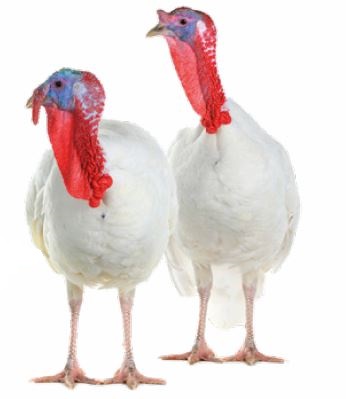
For the first time, a disease similar to Avian Chlamydiosis was described in Germany in 1879, and several subsequent outbreaks were reported in Europe, the most important being in France.
In 1895 Morange coined the term psittacosis for this disease from the Greek Φιτταχοζ from which the word psittacine comes.
- In 1929, the first report of avian chlamydiosis or psittacosis was detected.
- In 1930, the disease spread to Austria, Czechoslovakia, Denmark, France, Germany, the Netherlands, Iceland, Italy, Norway, Poland, Spain, Switzerland, and Sweden in Europe, Algeria, and Egypt in North Africa; Mexico, Canada and the US in North America; Japan and Australia in the Western Pacific.
From 1988 to 1998, the US Centers for Disease Control and Prevention (CDC) received 813 records of psittacosis, considered a conservative number since this disease is challenging to diagnose and rarely reported (Johnston et al., 2000).
During the 1980s, in approximately 70% of human cases, the source of
Keep up to date with our newsletters
Receive the magazine for free in digital version
REGISTRATION
ACCESS
YOUR ACCOUNT
LOGIN
Lost your password?
ETIOLOGY
C. psittaci is an obligate intracellular parasitic organism. It is a spherical, Gram-negative bacterium of 0.3 to 1.5 µm in diameter that contains DNA and RNA. It has a rudimentary cell wall made up of lipopolysaccharides.
Strains of C. psittaci isolated from different avian species consist of different serotypes, which can be differentiated by the host and its ability to cause disease. C. psittaci presents different serotypes: Psittacino, Pichon I, Pichon II, Duck, and Turkey.
Currently, there are eight serotypes, which are mentioned below:
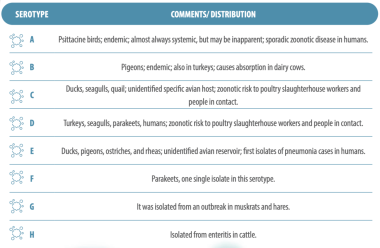
Table 1. Different serotypes of C. psittaci (Andersen, 1997)
Organism observation
- The organism is observable as intracytoplasmic inclusions at magnifications of 800x or greater under phase contrast, dark field, or electron microscopes.
- The organism is susceptible to agents that affect the lipid content of the cell wall, such as quaternary ammonium compounds, alcohol, hydrogen peroxide, and silver nitrate.
DEVELOPMENT CYCLE
The development cycle of C. psittaci consists of 5 phases:
- Adhesion and penetration of the cell by the Elementary Bodies (EBs). EBs are the non-propagative infectious form of the bacterium. They measure approximately 0.3μm.
- Transition from metabolically inert EB to Reticular Bodies (RBs). The RB is larger (0.5-1.5μm), metabolically active, fragile, and of low density.
- Growth and binary fission of RBs. Due to this fission, microcolonies are produced containing 100 to 500 chlamydial organisms per cell.
- Maturation of non-infectious RBs to infectious EBs. This involves the restoration of the membrane surface and its toxicity.
- Release of infectious EBs. Infectious EBs are released by lysis of the host cell caused by parasite enzymes.
DISTRIBUTION
This disease is distributed worldwide. However, In Mexico, until a few years ago, it was considered “exotic” by the animal health authorities (SAGARPA).
SUSCEPTIBLE SPECIES
Production birds, wild birds, goats, sheep, cows, pigs, mice, hares, and cats are the most susceptible species in addition to humans.

PATHOGENY
The pathogenicity and virulence of C. psittaci vary depending on the strain, host conditions, degree of exposure, and environmental factors.
The form of transmission is also determined by the following:
- Strain virulence
- Host susceptibility.

The infection in birds can be acute, sub-acute, or chronic. In most birds infected with C. psittaci, no clinical signs of disease are observed.
- These asymptomatic birds can transmit the infection intermittently, and the risk of transmission increases when stressful situations occur.

SIGNS
Young birds exposed to virulent strains frequently develop lethal systemic infections.
Clinical signs (Photos 1 and 2) include:
- Ruffled feathers, low temperature, tremors, lethargy, conjunctivitis, dyspnea, sneezing, coryza (in nestlings), and sinusitis (Australian parakeets).
- Emaciation, dehydration, and diarrhea of a characteristic lime green or gray color, watery diarrhea may also be observed. Death occurs within 8 to 14 days. Spontaneous recovery is rare.
- The subacute disease is typical of all avian species with low susceptibility.
- Drowsiness, ruffled feathers, conjunctivitis, pharyngitis, keratitis, serous or mucopurulent nasal discharge, dyspnea, loss of appetite, polyuria.
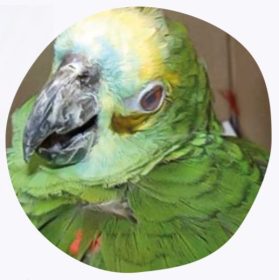
Photo 1. Amazon Parrot (Amazona aestiva). Signs: Conjunctivitis, epiphora (lacrimation), and dyspnea.
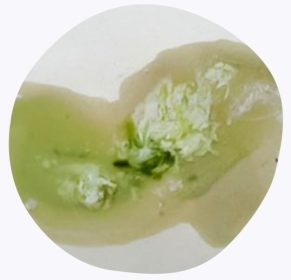
Photo 2. Biliverdinuria is observed in urine
MACROSCOPIC LESIONS
The necropsy findings (Photo 3) are not pathognomonic, mainly presenting:
- Conjunctivitis,
- Fibrinous peritonitis,
- Perihepatitis,
- Enteritis,
- Nephrosis pneumonia,
- Airsacculitis,
- Splenomegaly, and
- Hepatomegaly
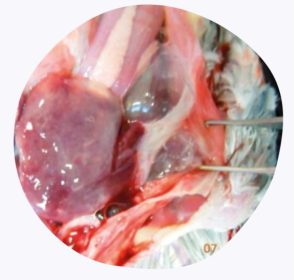
Photo 3. The necropsy findings are appreciated, as they are; perihepatitis, air sacculitis, peritonitis, and pericarditis.
MICROSCOPIC LESIONS
Histopathological lesions are not specific, except for intracellular “inclusions.”
These inclusion bodies (Photo 4) can be found in various organs. However, they are persistent in serous membranes.
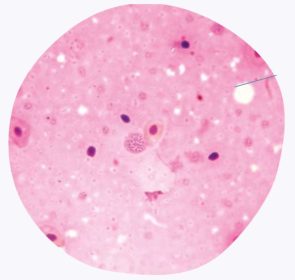
Photo 4. Inclusion bodies can be observed inside the cell.
DIAGNOSTIC TESTS FOR C. PSITTACI IN BIRDS
CELL CULTURE:
This is done with McCoy cell lines or chicken or mouse fibroblasts. This test detects small amounts of the organism in two or three counts. The disadvantages of this test are cost, technical difficulty, and time. The first count takes six days; the second and third counts require three days each, so all three counts require approximately two weeks.
ENZYME-LINKED IMMUNOABSORBENT ASSAY (ELISA) TEST:
This test detects IgG serum immunoglobulins and specific IgA antibodies. However, although the system is highly sensitive and easy to operate, sometimes there are false-negative results due to the action of inhibitory drugs such as chloramphenicol, penicillins, tetracyclines, etc., that may have been administered shortly before the test.
INDIRECT IMMUNOFLUORESCENCE TEST:
This technique is best for demonstrating group-specific antigens with the disadvantage that non-specific fluorescence sometimes occurs, complicating interpretation.
HISTOPATHOLOGY:
This technique allows the observation of intracytoplasmic inclusions once the suspicious tissues to be sectioned are fixed in Zenker’s solution and stained with Gimenez’s or Macchiavelo’s solution.
COMPLEMENT FIXATION TEST:
A complement (usually guinea pig) is necessary to bind antigens and antibodies. This system is similar to ELISA. However, the latter is more sensitive. On the other hand, the commercial guinea pig supplement is inappropriate for most avian species due to its incompatibility.
MICROIMMUNOFLUORESCENCE (MIF) TEST:
This is the most sensitive of the serologic tests for chlamydial species and is the only one that detects species-specific responses. It is based on visualizing elementary and reticulate bodies instead of intact inclusions. This assay can measure IgM, IgA, and IgG subclass responses. However, experience and training are required.
POLYMERASE CHAIN REACTION (PCR):
It allows the detection of a fragment of the pathogen’s genetic material. Currently, the most common techniques for C. psittaci detection are:
- Conventional polymerase chain reaction.
- PCR in real-time.
- DNA microchips.
DIFFERENTIAL DIAGNOSIS
The differential diagnosis in birds is made against Pasteurellosis, Salmonellosis, Colibacillosis, Mycoplasmosis, Avian Influenza, and Newcastle Disease.
TREATMENT
In farmed birds, the treatment is not economically viable. For domestic birds, the treatment is based on Doxycycline: 25-50 mg/kg orally twice a day or 200-800 mg/L of drinking water.
PREVENTION AND CONTROL
Biosecurity: Cleaning and disinfection of establishments and equipment, ventilation, reduction of gas accumulation, all-in-allout handling, new and exhibited birds, quarantine for a minimum of 30 days, control of wild birds and rodents, control of mechanical vectors, use of gloves, masks, and goggles when handling suspicious birds.
- There are no commercially available vaccines; some experimental immunizations have been carried out in turkeys with mixed results.
IMPORTANCE IN POULTRY
The economic importance on the poultry industry is based on the low performance of the birds, as well as;
- Growth retardation,
- Weightloss,
- Depression and
- Cessation of the laying.
- In turkeys, egg production can drop by up to 60%.
Since the pathogen is a bacterium, it is difficult to have complete immunity after an episode of illness. The exact risk of reinfection occurring is still unknown.
CONCLUSION
The routine detection of Chlamydia psittaci from bird samples is critical to control the infection in poultry farms and to carry out prevention measures and campaigns aimed at informing the population that may be affected by that disease

Visit here
*Bibliography available on request
It may interest you:
S. Infantis: an emerging serotype that became resident? Part II
Rearing: “The right beginning” for an excellent egg production
Most frequent respiratory infections in turkeys
[/register]
PDF









